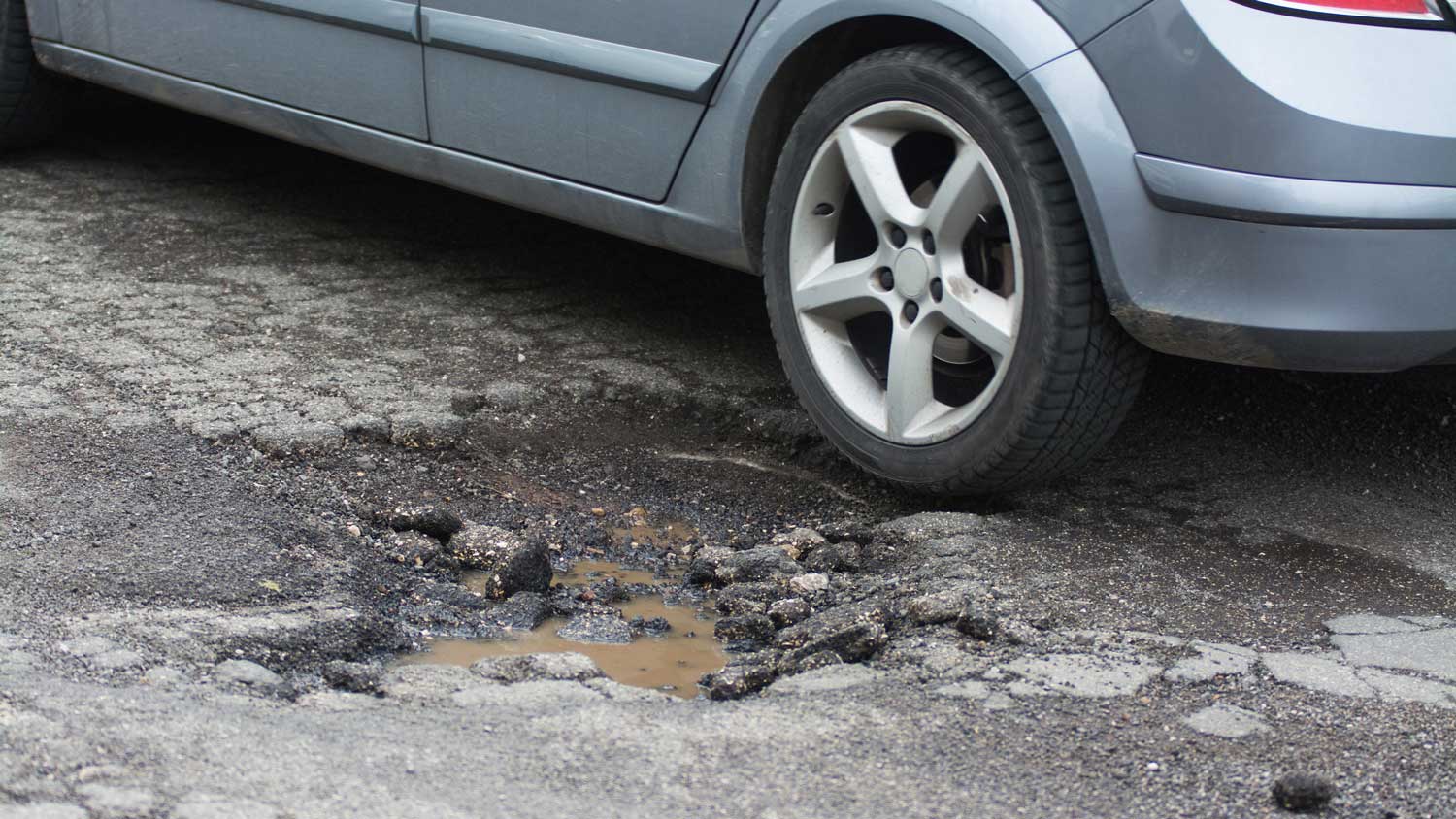We are all frustrated with the conditions of roads in our neighborhoods and around the city. We get asked all the time how to get roads repaved or patched. Blame gets thrown around, but we’ve found that most people don’t truly understand how road funding works in Indiana. That’s understandable; the formulas are incredibly complex!
After seeing Indianapolis City-County Councilor for District 3, Dan Boots, post about this on his Facebook page, we asked if he’d put together an article to try and explain how funding works and what might need to change to increase the quality of roads in Indianapolis.
The following is Councilor Boot’s write-up.
Thank you, Councilor!
Indianapolis City-County Councilor, Dan Boots, Explains Indiana Road Funding
Roads and streets inevitably deteriorate with time and increased vehicular traffic. Marion County has the greatest share of the state’s population, the greatest share of roads and lane miles, and the greatest number of vehicles and vehicle miles traveled, of any of the 92 counties. Yet, Indianapolis’s roads and streets have historically been woefully underfunded year-after-year by the State of Indiana.
It’s time for a change.
One of the primary funding sources for roads is gas taxes. The other is called a “wheel tax,” which is based on the number of vehicle registrations in the county.
The State of Indiana collects those taxes and doles them out to the local governmental units. As shown below, Indiana’s transportation funding is quite complicated!

Center Line Miles
Another factor the State uses in allocating road funds is “center line” miles, which is simply the length of a roadway as measured down its center line, regardless if that roadway is a mere rural road or a 6-lane urban street.
Marion County has over 8,400 lane miles and (while there are only 28,000 total lane miles across the State) has about 3,400 centerline miles, which accounts for only 4% of the total centerline miles in the state, exacerbating the wear on our road system.
If indexed for the amount of traffic, Indianapolis gets about $3.22 per vehicle mile traveled (VMT) of the total statewide distribution, while the smallest county in Indiana, Ohio County, receives $19.15.
Consequently, a small rural town gets the same consideration per mile for its rural, 4-way stop, main street as Indy does for its multi-lane major thoroughfares, such as Keystone Ave, E. 82nd St., and 38th St. That is blatantly unfair.
Population By County
Yet another factor the State uses in its calculation is the population of Marion County. That sounds pretty straightforward; however, the figures the State relies on are based on the original Indianapolis Fire Dept. (IFD) district map from years ago that was the original Indianapolis boundary PRIOR to the consolidation of the various township fire departments.
Marion County has roughly 14.5% of the state’s population but receives only about 11% of road funds. (This population calculation impacts several state tax distributions.)
The fire district area population has grown considerably over the last several years as IFD now operates in Center, Washington, Perry, Lawrence, Warren, and Franklin Townships, in addition to some of included towns and excluded cities. Here again, the state is using inaccurate and outdated information to decide how much road money it will provide Indianapolis.
It’s estimated that Marion County would receive an additional $7M/year if the omitted populations in Pike, Wayne, and Decatur townships were included in the State’s calculation.
Adding to the problem is the fact that over 150,000 persons travel into Marion County daily for work from the adjoining donut counties. Those persons’ taxes, however, stay in their county of residence with no funds going to support the transportation center of the State.
Not only is the State counting the Indianapolis population as 2/3rds of the whole, an internal audit done a couple of years ago suggested the State had underfunded Marion County nearly $75M over the past 10 years because the formula was not accounting for the growth of the IFD fire district. When the error in their calculations was pointed out to State authorities, they finally admitted their error and corrected this aspect for future calculations, which has resulted in a small increase in road funds. However, they chose not to pay Marion County the amount of their deficient underpayments (the approx. $75M) for the last several years.
That notwithstanding, the major factor of center line miles versus lane miles is what really leads to a perennial significant underfunding of our city and residential streets in Indianapolis.
Central Indiana is the economic engine for the state, and Marion County taxpayers pay considerably more taxes to the State than we get back in public funds for our streets. Again, it’s time to change that.
Community Crossing Fund
Finally, another source of road funds is the Community Crossing Fund (CCF) program.
Launched in 2016, the CCF program was formed as a matching grant program to help local governments fund improvements to roads and bridges. Grants are limited to $1M per local government per calendar year.
In FY 2021, Marion County contributed an estimated $22.3M to the CCF program, which represented 12% of the program’s total revenues. However, on an average annual basis, Marion County receives only about 2% of total program awards, representing only $0.12 for every dollar the City contributes to the CCF program.
The economic health of the 9-county central Indiana region is a fundamental driver for the entire State of Indiana’s economy. This is simply further indicative of the fact that the cost burden of infrastructure across the State is shared unevenly.
This underfunding issue impacts all metro areas across the state. Legislative efforts to address this situation this year include changing the population formula and addressing the deficiency of the Community Crossing Fund.
As the cities surrounding Marion County continue to grow and develop, they will increasingly feel these constraints as well as they advocate for their fair share of road funding.
Contact Indiana Senate and House
To aid the cause, I urge you to contact the Republican leadership in the Indiana Senate and House, encouraging them to support adjusting the road funding formula to make it more equitable. Many thanks.

Dan Boots
Indianapolis City-County Council, District 4
Dan.Boots@indy.gov




